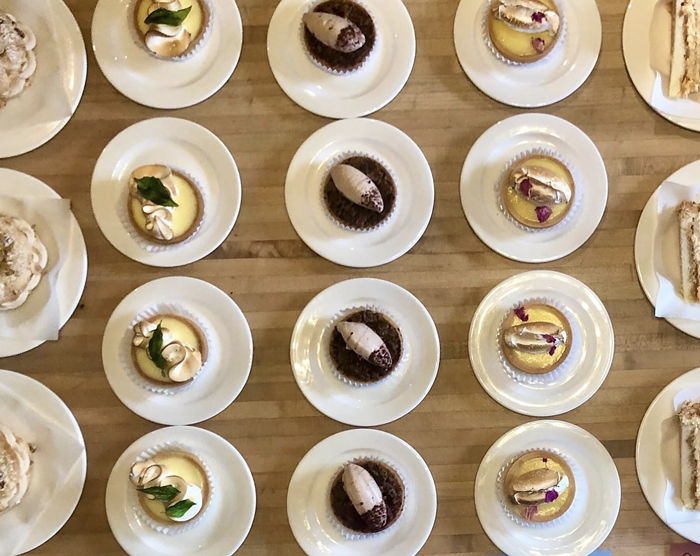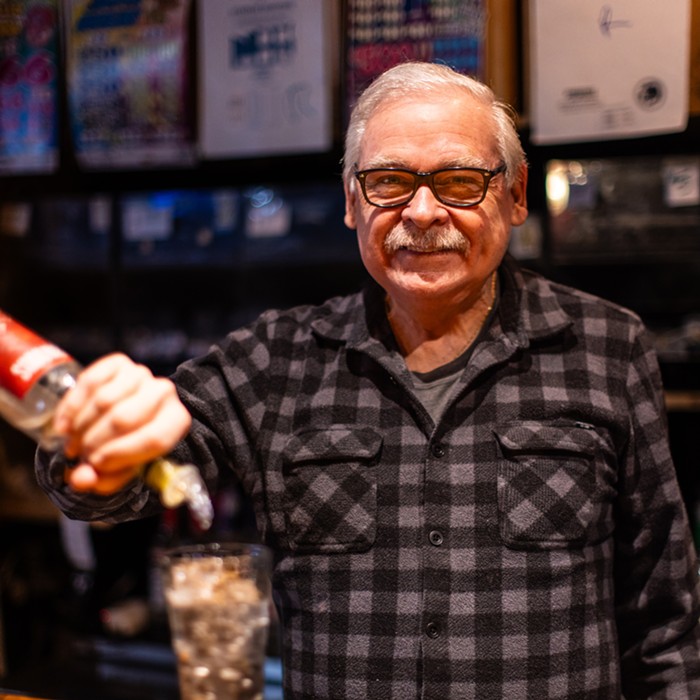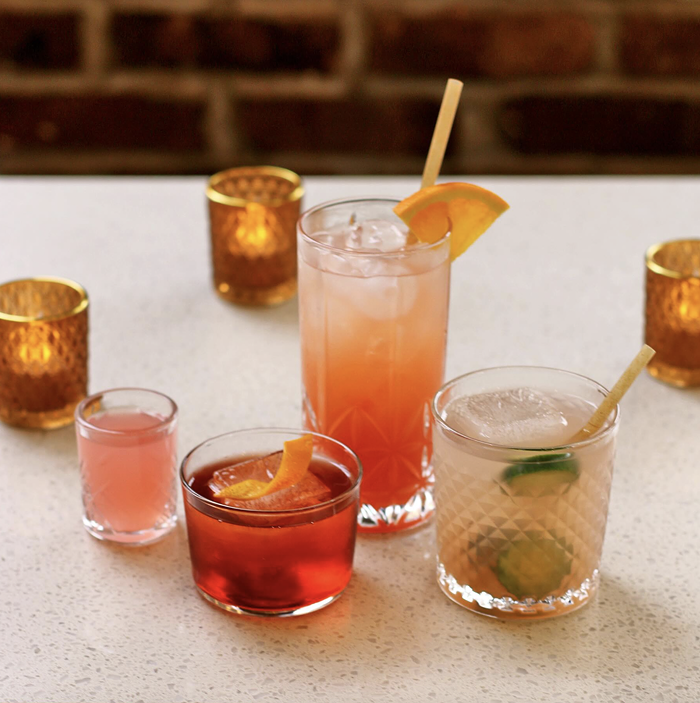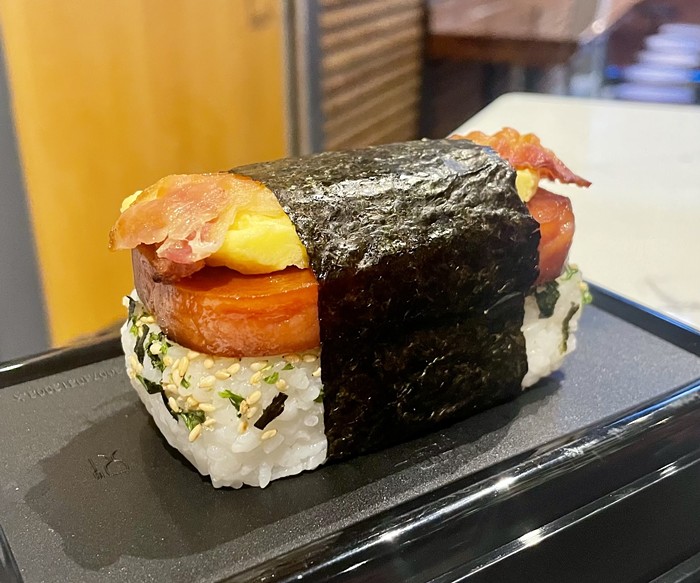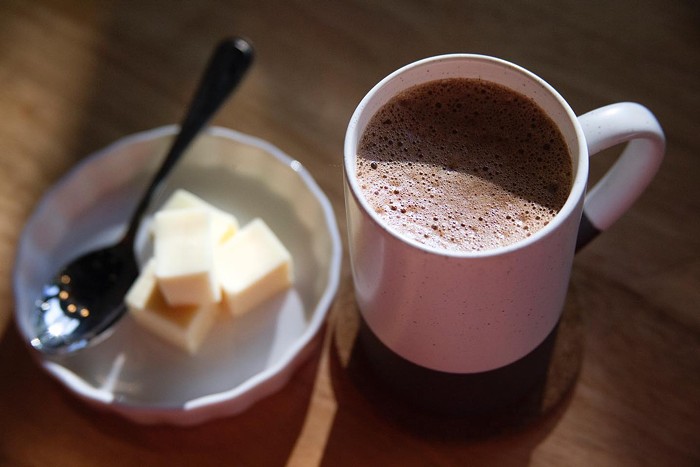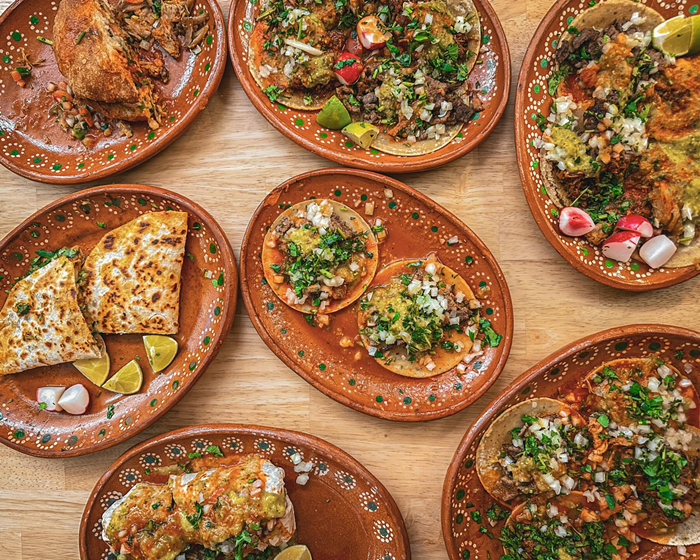
There’s ‘80s music rockin’ on the airwaves at Local Tide when I walk in for my interview with Victor Steinbrueck, owner and chef at the recently opened Fremont seafood spot. (If the name Victor Steinbrueck sounds familiar, yes, his grandpa is that Victor Steinbrueck.) Victor, or Vic, smiles and shows me back to the kitchen, landing in front of a workbench where twenty-five cold, imposing Dungeness crab carcasses lay stacked like stones in a steel bin.
I know crab. Crab is my friend. We were destined to be close—after all, Cancer is my sun sign. And in Maryland, where I grew up, blue crabs were synonymous with our muggy, mid-Atlantic summers. We'd buy the softball-sized crustaceans, freshly trapped, and throw them over the steamer with a crust of Old Bay so thick it’d shatter like a tectonic plate under the blow of a blunt wooden mallet.
Today at Local Tide, Vic and I crack open Northwest Dungeness, indigenous to the Pacific Northwest and our neighboring Canada. It’s certainly not the Chesapeake Blue that I’m used to. But I’ll take one king in place of another, and besides, I consider myself somewhat of a crab-cracking champion, so we pull on our gloves and get to work.
Vic and I first take off the crabs’ armored tops by leveraging a fissure beneath the “apron.” Our thumbs resist the seam, and the carapace splits open with a terrific yawn, revealing soft, squiggly innards. Brine sloshes out and slowly seeps down my wrists and into my sleeves. We drain the liquid and throw away the gills, guts, and gonads—all the undelicious (and unimportant) offal—but carefully scoop every bit of sticky yellow goop into a Tupperware. Commonly known as crab “fat,” the golden glob of yolk is actually the tomalley, an enzymatic substance akin to a crustaceous liver.
Crab “fat” is often the most coveted part of a crab. This was the general consensus around the tables of my Chinese-American childhood, where relatives slurped 蟹黄 (xie huang), or “crab yellow” out of the fragrant abdomens with noisy abandon, like a chorus of broken straws. Funky and concentrated, the flavor of crab “yellow” can be best described with a term I borrow from my ancient, artful culture: 浓 (nong). The literal translation of 浓 is “thick.” Its meaning, however, implies more of an emotional affect than a physical viscosity. 浓 describes what happens when you eat something so decadent and rich, you feel it in your spirit. An indulging, savory, almost cloying umami; 浓 is Chinese food for the soul.
Vic calls that yellow stuff “good fat.”
“If we’re gonna be bringing in these beautiful fish—this beautiful seafood—we wanna see what it has to offer and utilize that as best as possible,” he explains. “Fat is flavor!” Meanwhile, he cracks the crabs like an Olympic competitor. I struggle to keep up.
Vic recalls preparing Dungeness crab with his mom and grandma, in the Chinese-Filipino kitchen of his childhood home, on the north end of MLK Way. “We’d boil them in saltwater, and maybe my grandma would always put a little ginger in there. And then we’d just crack into them and eat it with mayonnaise and rice, and we’d have a little Thai chili vinegar, and we’d eat it with the head fat, and we’d kind of get down and get messy. I’ll still do that. If I’m eating crab by myself. It’ll be rice, mayonnaise, and chili vinegar.”
While we crack, Ian Tierney, the fish guy at Local Tide, comes to the kitchen with a clang. He hauls steel trays of long sockeye slabs in a salt-sugar cure onto the table’s smooth surface, and starts sectioning them into horizontal strips with a spatula. He puts each slice atop a clean square of parchment with a steady hand and weighs them individually before placing them into a prep container.
Ian will later perch the fish upon a crisp sheaf of butter lettuce, top it with pickled onions, and pillow the whole thing between puffy white brioche. This is not the scrappy $10 fare you might find somewhere like Mr. Lu’s on the Ave (although there’s a revered spot in the hierarchy for those greasy spoon varieties). Rather, this salmon has been cherished from the moment of its first capture to its final plating.
All in all, the Salmon “Sando” at Local Tide might be my favorite salmon sandwich in Seattle. Ian hands me a morsel to try—it’s part of a tail piece, the tastiest piece—and I marvel at the milky marble of fat on the fish. To my left, Vic plucks out succulent chunks of Dungeness claw meat for me to nibble on. I ask myself if this is heaven. And decide that it is.
Vic and Ian both grew up in Seattle and are best friends, like Tweedledum and Tweedledee. They played basketball together and attended the same schools. After college, Vic went on to pursue basketball professionally, while Ian worked in the business department of a sock company. Physical injuries would soon halt Vic’s basketball career. After a healing period, Vic remade himself as a chef, gaining experience as a caterer, server, and personal chef (for a Seahawks player). The two remained close throughout.
A few years later, in 2017, both friends were aching to “start sumthin’,” Vic says. “I dunno what, so we came up with a name, and we went with seafood because we’re from Seattle, and it just made sense. We sat there and came up with a game plan of what we wanted to do. The best thing we could do back then to highlight the Northwest was taking the crab we had here, taking from the Northeast lobster roll, getting the live crabs and hand-cracking them.”
And so, Local Tide’s coveted crab roll was born.
Vic and Ian hosted pop-ups in the Atrium Kitchen at Pike Place. Family and friends would come by to help toast bread, sample fresh Dungeness, and provide endless morale.
The Local Tide team has come a long way since its early pop-up days—Vic, who is now the sole owner of the restaurant, opened up his sleek Fremont space in August 2020. But the intention behind the food remains the same: wild-sourced seafood is meant to speak volumes on its own; cooking and seasoning should be done sparingly and only to enhance its purity of flavor. And while Vic brings his chef brain to the table, it is Ian who knows fish. After the pair started Local Tide, Ian worked at Pike Place Market, where he learned about sustainability and sourcing in the commercial fishing industry.
“This helped to expand our breadth of knowledge,” Ian elaborates. He wants to contribute this knowledge and teach people about marine conservation through future programs at Local Tide. “What people don’t know is that the strictest commercial fishing regulations are in the Northwest and in Alaska. For years we have been at the forefront of protecting not just this area, but also the global waters. Because they’re so interconnected. All the plastic, garbage piles that are blowing across the Pacific right now, it’s not just one country or manufacturer. It’s all of us.”
What Ian the fish guy says is worth noting. The ocean is the largest body of moving matter on this furiously spinning rock that is our planet. It is home to some of the most biodiverse—and most vulnerable—ecosystems known to humankind. Microplastic from Mexico finds its way across the Pacific into the guts of Japanese bluefin, and oil spilled in California will inevitably end up in our Dungeness. As Earth’s environment continues to deteriorate rapidly, our global oceans require a level of attention and care that can only be carried out collectively.
Vic and his Local Tide family intend to cultivate more of this educational dimension to the restaurant in the coming months. An irreducible part of this project, I mention, is also in giving a platform to Indigenous history by speaking on the hallowed relationship between mankind and marine life in the Pacific Northwest.
Whichever way you look at it, sustenance from the sea, such as salmon, has been immersed in webs of ritual and stewardship since time immemorial. The Tulalip Tribes, along with others along the Columbia River Basin, return the bones of the first salmon to the river each year in gratitude. The Nechesne of Cascade Head lit fires on seaside cliffs, like massive beacons, for migrating Chinook. And even slinging fish like hot potatoes across the floor of Pike Place Market is a custom that reiterates their impact upon the cultural identity of our local land and sea.
“We really want to bring in that conversation. Because the ways tribes approach conservation work are much better for the environment than any regulations that currently exist,” Ian nods.
Vic, too, understands that there is still much to be done. He also believes that Local Tide is currently charting its truest course.
“I just think back to the name we chose, which we chose on such a whim, we threw out 200, 300, 400 names. How cool it was to be two local guys, opening a place with a name like Local Tide, serving a product that’s local, from our area, and being in the middle of Seattle doing that. Like, it just feels so right,” he concludes.
